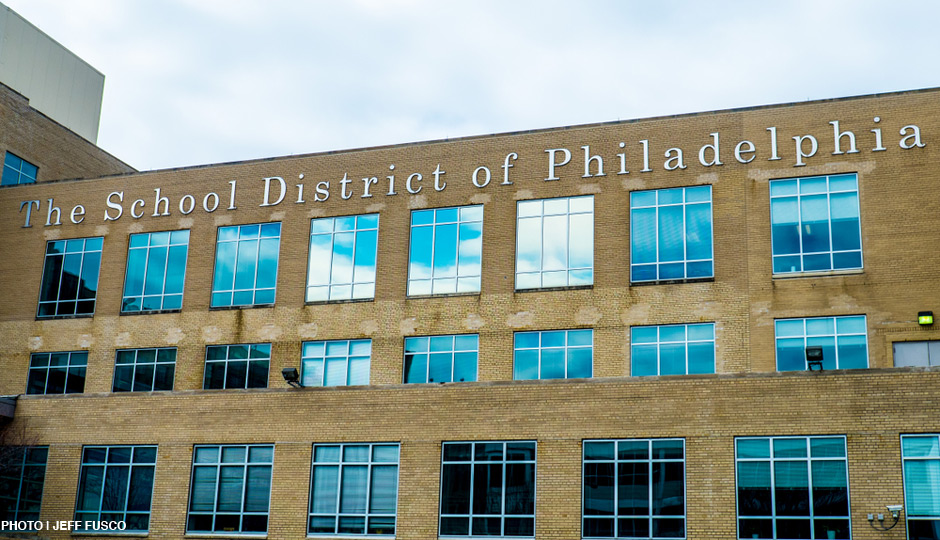Study: Philly Support for Public Schools Is On the Rise

Photo by Jeff Fusco
There is a perception in some circles that the City of Philadelphia has been less than generous when it comes to public schools. But maybe it’s time to rethink that view.
A new report from Temple University’s Center on Regional Politics suggests the city has dramatically boosted its financial support for schools in recent years — and that the city’s oft-impoverished residents are carrying a heavier-than-expected tax burden as a result.
The study, “How Well Does Philadelphia Support Its Public Schools? A New Perspective,” avoids concluding that the city “does more than it gets credit for doing.” But it highlights important data:
- Philadelphia’s financial contribution to public schools grew by nearly 28 percent between 2011 and 2014. (Citified noted this dramatic boost last year.) The average Pennsylvania school district saw its local support rise just 7 percent during the same time period; only two of the state’s 499 districts saw a bigger proportional increase.
- In a comparison with 20 other big U.S. cities, Philadelphia ranked eighth in its share of local tax dollars dedicated to education — roughly 29 percent. “Memphis, Fort Worth, Nashville, and Chicago had rates very close to Philadelphia’s,” the study’s authors wrote. “Dallas, Pittsburgh and Boston topped the list with rates around 34% or more.”
- Similarly, the city sits in the middle of the pack — 10th — in a comparison of per capita local spending on schools. The city spent $666 per citizen on public schools.
- Thanks to the city’s deep poverty, however, that spending was a bigger burden on local citizens: The city spent $30.87 on local schools for every $1,000 that its residents earned — ranking Philly fifth in that measurement.
What’s more, those figures in the last three bullet points all come from 2011. They don’t take into account the city’s efforts since then.
“For Philadelphia, those increases include hikes in the city’s property tax and use and occupancy tax, the extension of a 1 percent sales tax that was scheduled to expire, and enactment of a $2 tax on a pack of cigarettes,” the study’s authors note. “Although city officials were reluctant to turn to these revenues for schools, they concluded that the state was unlikely to provide sufficient new revenues to mitigate the district’s severe fiscal problems.”
There are obstacles to increasing that support further, the study suggested.
For one: Philadelphia is a single city inside a single county. That means the city doesn’t share the burdens of county-level expenses — like courts, say — with other cities in the same county, which reduces its ability to be flexible about spending.
Even then, the city would have to get its financial house in better order: More than 15 percent of the city’s budget goes to paying for the underfunded pension system.
“If the city did not have an almost $6 billion unfunded pension liability, it would have hundreds of millions of dollars annually to improve schools, city services, or to reduce its non-competitive wage and business taxes,” the study said. “Very possibly, it would do all three.”
Otis Hackney, Philadelphia’s Chief Education Officer, provided a statement in a response to the report: “Over recent years, the city has increased recurring revenue to schools by nearly $400 million, and now we’re working to address external factors that hugely impact our children’s K-12 academic performance through community schools and pre-K expansion. We must continue to support our schools locally if we want to see ongoing improvements.”
Officials with the school district and the city did not comment Wednesday on the report.